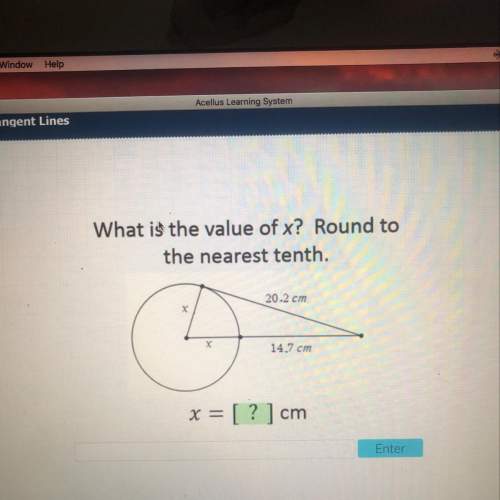
Mathematics, 17.04.2021 05:20 dudeguy3593
6. Prove that linear functions grow by equal differences over equal intervals. Part I. This is the graph of . Use the graph to show that equal intervals of x-values have equal differences of y-values. a) Think about an interval on the x-axis starting with p and ending with p + k. What is the difference between the x-values? What is the difference between the y-values for these x-values? Complete the tables using . Interval between p = 2 and p + k = 6 Difference x-value 2 6 4 y-value –2 Interval between p = 10 and p + k = 14 Difference x-value 10 14 y-value b) The difference in the x-values for each interval is . This value is constant because difference = (p + k) – p = . c) The difference in the y-values for each interval is . This value is also constant because difference = − 1 2 ( p + k ) + 1 0 − ( − 1 2 p + 1 0 ) = − 1 2 p − 1 2 k + 1 0 + 1 2 p − 1 0 = − 1 2 k difference =− 2 1 (p+k)+10−(− 2 1 p+10) =− 2 1 p− 2 1 k+10+ 2 1 p−10 =− 2 1 k d) Does your answer in part c depend on p? If not, what does it depend on? Part II. Use a similar method to prove that for any linear equation, y = mx + b, equal intervals result in growth by equal differences. Step 1: If the equal interval length is k, the two endpoints of the interval will be labeled p and p + k. Label the endpoints of the corresponding interval on the y-axis of the graph below. Hint: First, substitute x = p into y = mx + b. Next, substitute x = p + k into y = mx + b. Step 2: Find the difference between the endpoints of the interval on the y-axis. (1) (2) [y-value at x = p] – [y-value at x = p + k] Step 3: Interpret your answer from Step 2 to prove that linear functions always grow by equal differences over equal intervals. Hint: Use these questions to justify your Does your answer to Step 2 depend on p? What does it depend on? Is the difference between the y-values the same regardless of where the interval starts?

Answers: 1


Other questions on the subject: Mathematics

Mathematics, 21.06.2019 17:10, sofiakeogh1487
If angle 2=3x +1 and angle 3=2x +4what is angle 2
Answers: 1


Mathematics, 21.06.2019 21:00, recon12759
Is there an x intercept in the equation 60*1.15^x
Answers: 3

Mathematics, 22.06.2019 04:00, briannabridgewater01
What is the answer to this problem? ignore the work. what is the correct answer?
Answers: 1
You know the right answer?
6. Prove that linear functions grow by equal differences over equal intervals. Part I. This is the g...
Questions in other subjects:




Mathematics, 03.02.2021 06:30






Mathematics, 03.02.2021 06:30




